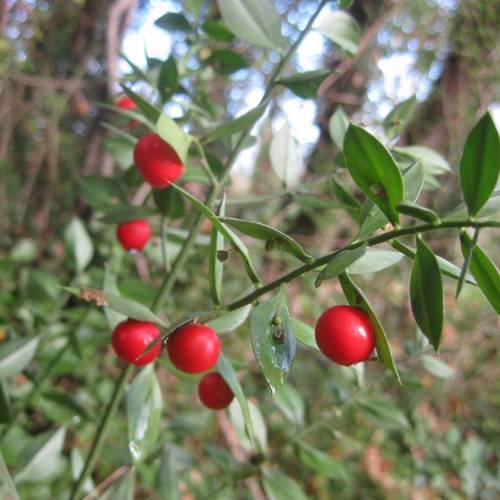
butcher's broom
Ruscus aculeatus
Cycle:
Perennial
Watering:
Average
Hardiness Zone:
7 - 9
Flowers:
Flowers
Sun:
part shade,full shade
Growth Rate:
Low
Maintenance:
Low
Drought Tolerant:
Yes
Salt Tolerant:
Yes
Care Level:
Medium
watering
Butcher's broom (Ruscus aculeatus) should be watered with enough to keep the soil lightly moist without becoming soggy or overly dry between waterings. This species prefers a well-draining soil and does not tolerate standing water, so it's best to water the plant every 7 to 10 days, depending on the temperature and moisture levels in the soil. During the warm summer and spring months, the plant may need to be watered more often, while during colder months, the soil can be allowed to dry out slightly between waterings.
pruning
Butcher's broom (Ruscus aculeatus) should generally be pruned lightly once or twice a year, preferably in late winter or early spring before new growth begins. If desired, a heavier pruning can be done in late spring after flowering. Pruning should focus on removing any dead or diseased branches, as well as any overly long and straggly stems.
sunlight
The butcher's broom plant species requires 6 to 8 hours of direct sunlight every day in order to properly grow and thrive. The best time to give your butcher's broom plant the light it needs is during the morning and late afternoon hours, when the sun is less powerful and intense. During these hours, the sun will provide the plant with enough light to help it flourish and remain healthy. Try to avoid exposing your butcher's broom to strong, intense light for longer than 8 hours at a time in order to reduce the risk of sun-burning the plant.
